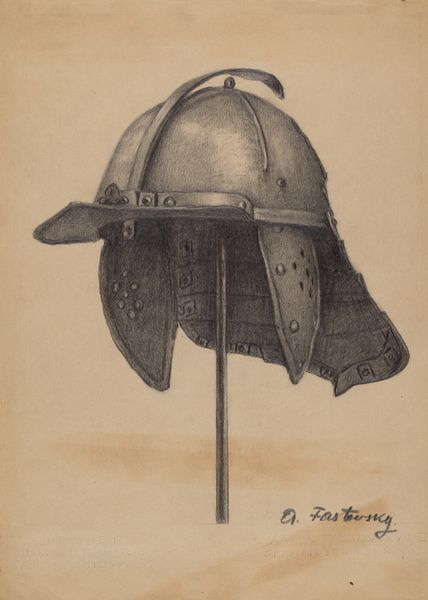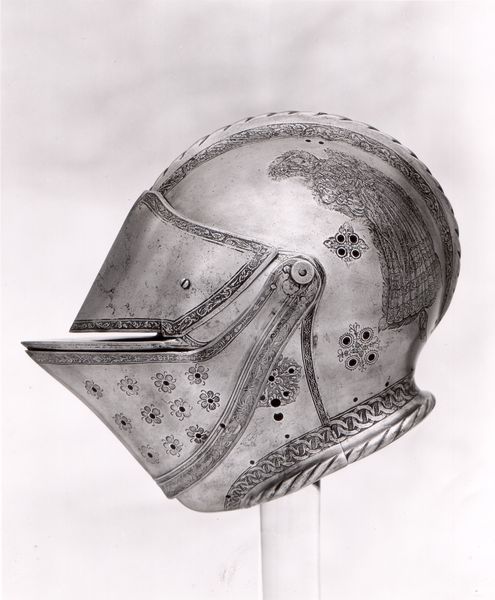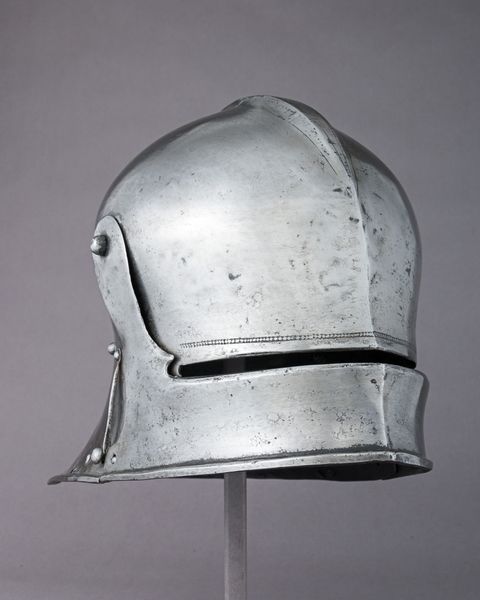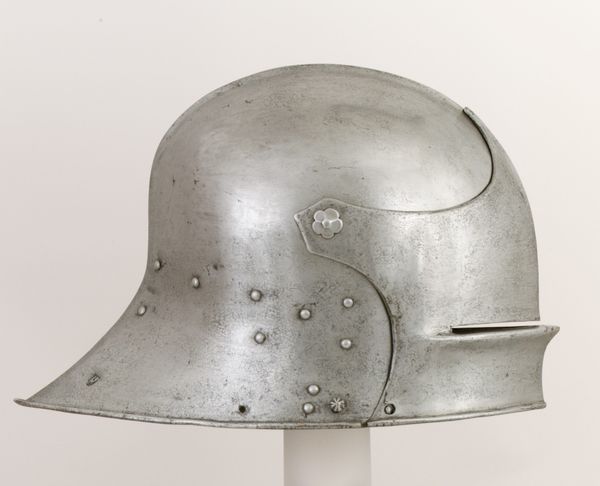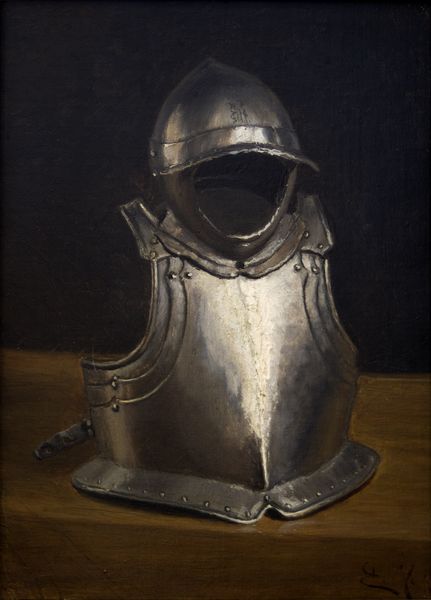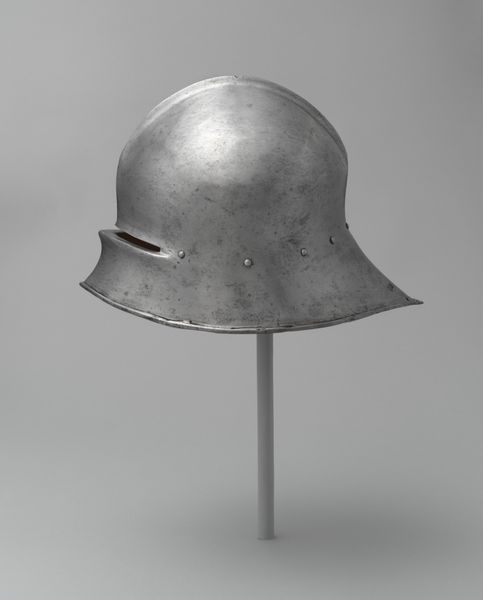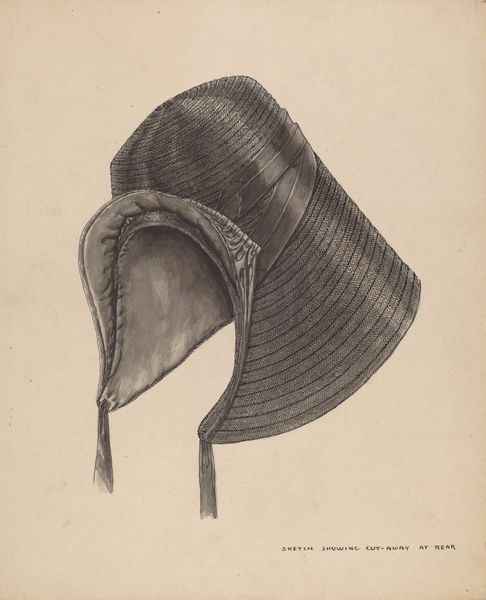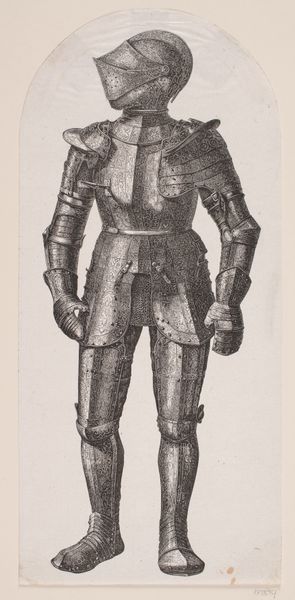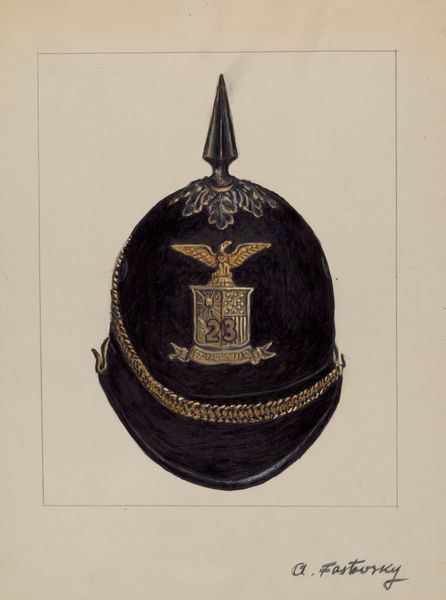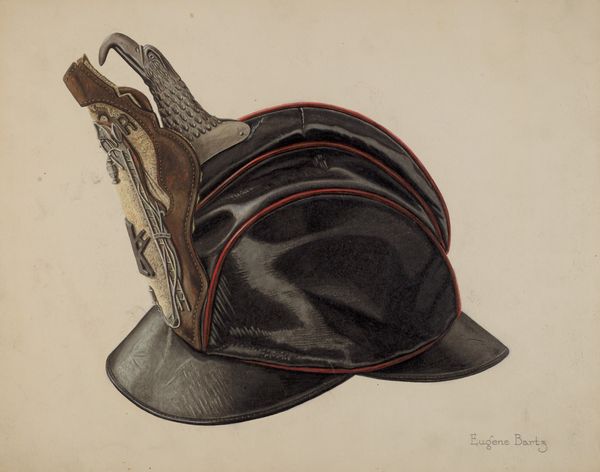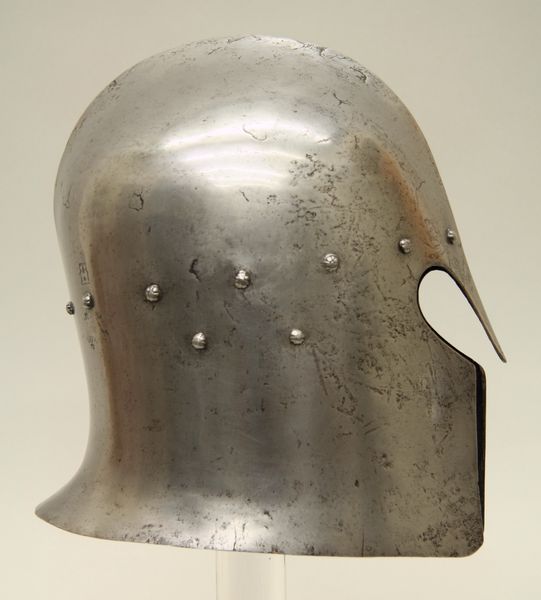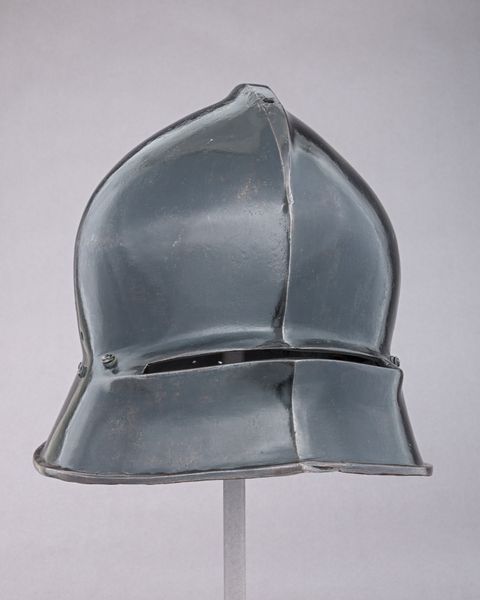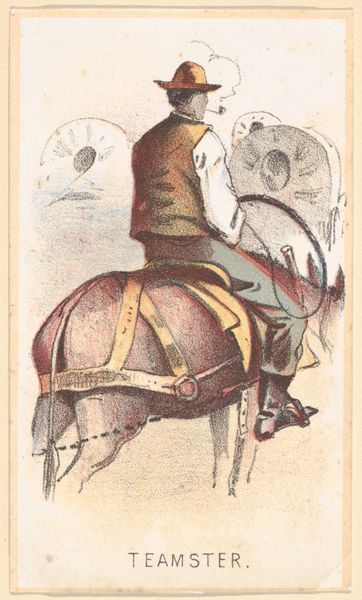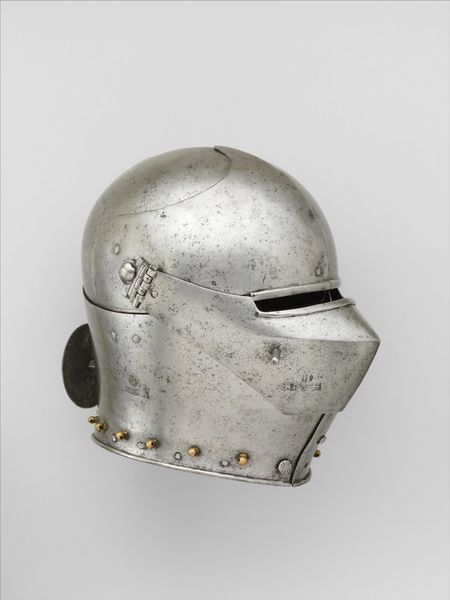
drawing, pencil, graphite
#
drawing
#
form
#
pencil drawing
#
pencil
#
line
#
graphite
#
portrait drawing
#
academic-art
#
realism
Dimensions: overall: 28.8 x 22.9 cm (11 5/16 x 9 in.)
Copyright: National Gallery of Art: CC0 1.0
Curator: Welcome. We’re standing before Aaron Fastovsky’s “Bourganet,” a pencil and graphite drawing created around 1936. It meticulously renders a helmet. Editor: It’s striking, the sheer amount of detail achieved with just pencil. It feels almost photographic, yet the softness of the graphite lends it an ethereal quality. Curator: Indeed. Let’s consider the Bourganet itself. Helmets, of course, are more than mere objects; they're signifiers of power, protection, and, arguably, the violence inherent in hierarchical systems. How might we interpret this representation in the context of the interwar period? Editor: I’m interested in the surface texture, the evidence of the artist's hand at work. You can almost feel the density of the graphite as it builds up to create volume and reflect light. It brings the metal of the helmet to life in a tangible way. Fastovsky clearly understood material properties. Curator: Certainly, there's an undeniable focus on verisimilitude, a desire to capture the object "as it is." But consider the symbolism. What stories might this object tell about its past users? Soldiers? Perhaps even hinting at the build up towards the second world war, when conflict and protection where looming larger than ever. The artist focuses intensely on the craft—or lack of it. What political and gender implications may emerge from such an approach? Editor: Well, I see this focused rendering as a celebration of labor itself. The countless hours of precise work mirroring the hours it took to create the physical artifact that is being reproduced. There is value both ways in their creation as items to be appreciated by viewers. Curator: An intriguing thought! Ultimately, the drawing invites reflection on both historical narratives of power and the role of craft in our understanding of it. Editor: Yes. It really highlights how closely bound material, skill, and object truly are. A true confluence of these aspects creating a drawing so alive with information.
Comments
No comments
Be the first to comment and join the conversation on the ultimate creative platform.
